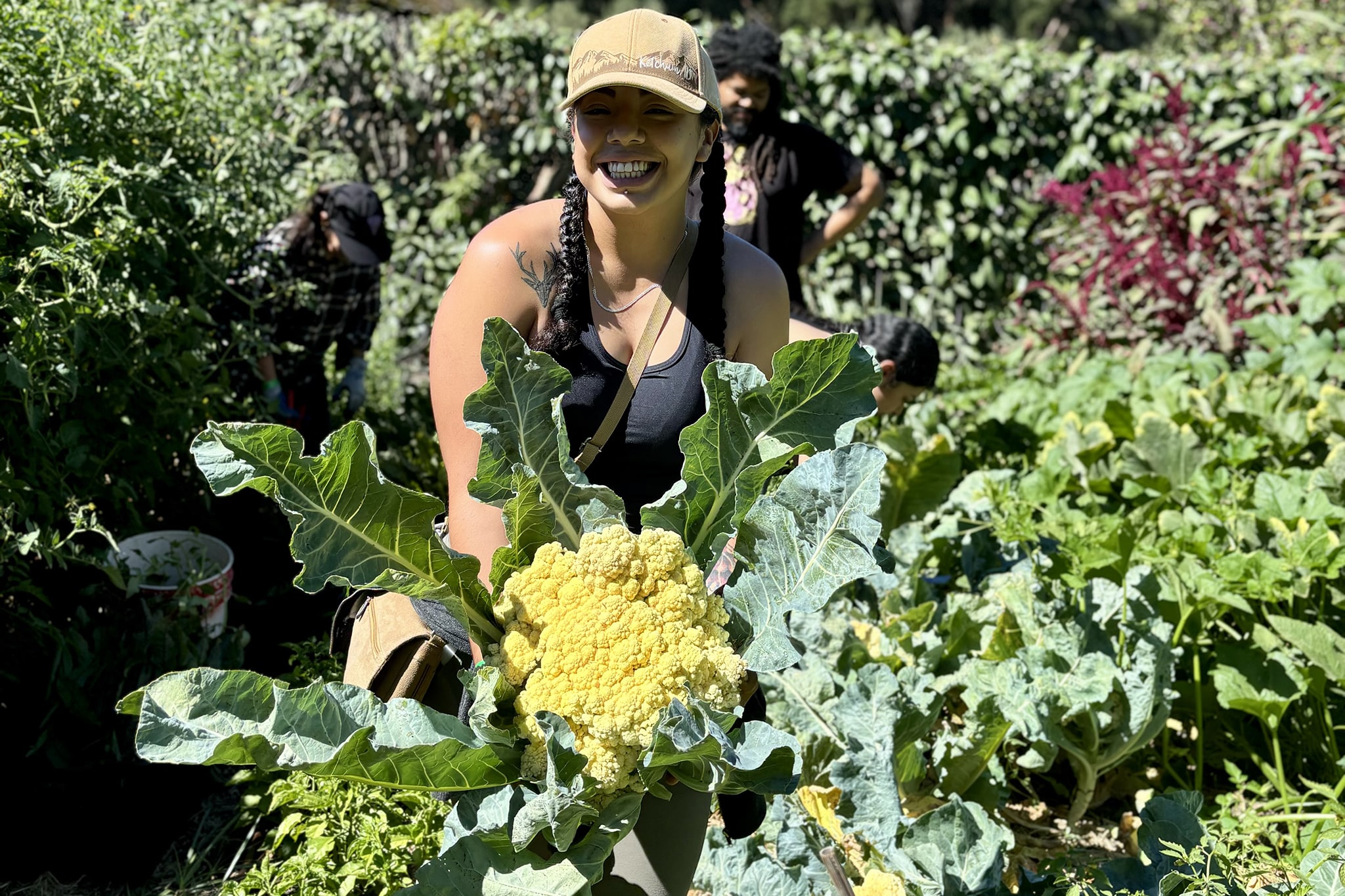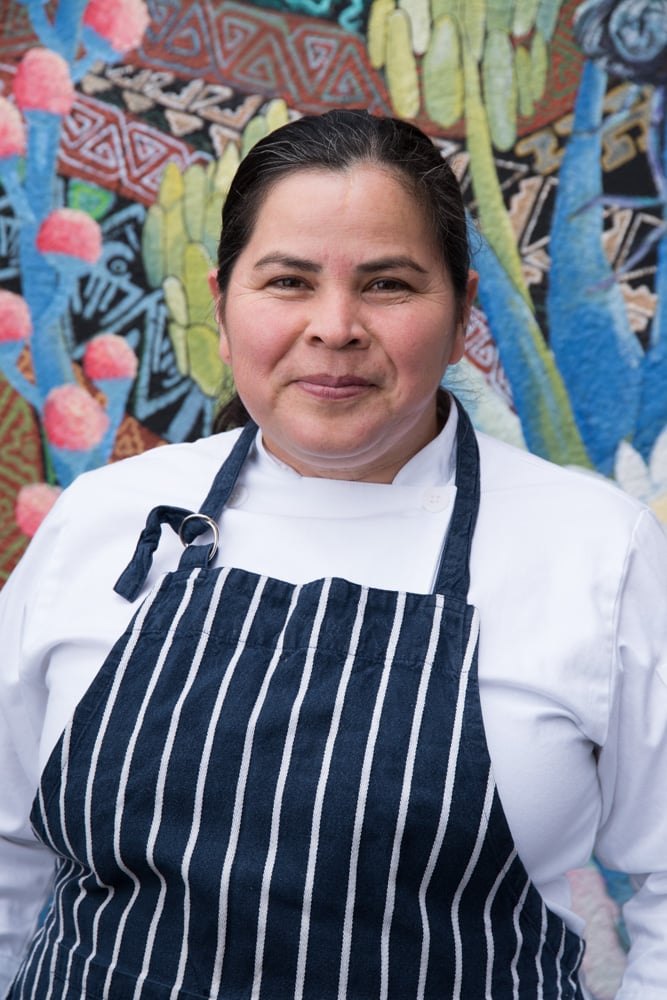Community Partner Spotlight: La Cocina

Filoli’s Vegetable Garden is a space to share stories and connect through food. Starting this summer, food business entrepreneurs from the nonprofit La Cocina came together to highlight Latine culinary traditions through a new partner plot.
La Cocina, located in San Francisco, is an award-winning nonprofit and innovative social enterprise that runs an incubator for food businesses, provides opportunities for working-class entrepreneurs to access sales and capital, and models what a vibrant and supported food industry can be. Their tagline states, “When women of color and immigrant women own local businesses, communities thrive.”
In order to create a cohesive garden plot, the La Cocina team brought together four Latine-owned businesses for this project. Each entrepreneur wanted to highlight ingredients from their ancestral home that they couldn’t easily find here in California or didn’t have access to in every stage of growth.

Julieta Del Rio: Tilín Tilín
When I started my love affair with cooking years ago, I’d look for these ingredients in fresh form – calling markets or driving for hours – but I’d never find them. Planting them here takes me back to my childhood in Panama, where they naturally thrived in home gardens. My dream meal has all of these ingredients: Guacho, a traditional Panamanian stew.

Pigeon Pea (Guandú) Growing up, we had a little pigeon pea plant, and I remember picking the pods and removing the peas. This guandú oloroso is purple and gives off a perfume that someone should bottle and sell!
Culantro With long, saw-toothed leaves, culantro looks different from cilantro – but it smells similar! I’ve now found culantro locally at a few stores, but I’ve also been successful in growing it myself.
Ají Chombo Hot Pepper Ají chombo is the signature pepper of Panama. Its spice level ranges from 18 to 140 times as hot as jalapeño.
Ají Cachucha Sweet Pepper I’ve made guacho before but I’ve had to make ingredient substitutions, like non-authentic peppers. Cultivating these hard-to-find flavors here at Filoli reconnects me with my roots, and I can’t wait to share a taste of my heritage through my cooking.
Dilsa Lugo: Los Cilantros restaurant
When you think about cilantro, you think of something that’s fresh and very flavorful. It says a lot about the type of food that we make at my restaurant! It’s an ingredient that is very Mexican, a noble plant that anyone can plant and harvest.

Amaranth
Amaranth is an ancient crop grown for its grain-like seeds. I’m excited to have it in its fresh form – almost like the flower stage – which you can’t often find locally. It’s used very seasonally and often consumed during Lent, prepared similarly to a chile relleno.
Nicaragua Sweet Pepper
I can use these peppers to make alambres, an informal street food dish from Central Mexico. You mix steak with onion and sweet peppers, and you sauté it with a little bit of pineapple, cover it with Oaxaca cheese, and serve it as tacos with a salsa verde.
Cilantro
I like cilantro in all its stages – when it’s young, as a microgreen, and in its flowering form. The freshness that it adds to salsa, guacamole, tacos – you fall in love with it.
Paola Lagunas, Fernanda Lagunas, Xavier Herrera: Alma y Sazón
Our business is all about making vegan dishes where veggies are the star. Being from Michoacán, we want to blend our cultural flavors with veggie goodness, adding that tangy, spicy kick to everything, just like in our family’s favorite escabeche – a pickled vegetable dish.

Cauliflower
Cauliflower isn’t just a side dish – we see it as a “meat” in our creations.
Strawberries and Poblano Peppers
Fresas con crema – strawberries and cream – is a traditional dessert from our region. We’d like to see how our cashew crema pairs with poblano rajas (strips) as well.
Tomatillo
Together with strawberries and poblano, we can make a sweet, spicy salsa with tomatillo from the garden.
Alma Rodriguez: Mixiote restaurant
When I think about the four plants in this row, it reminds me of my mom’s cooking. She always grew her own herbs, and I loved the beautiful colors and scents when she cooked with them. She cooked simply and let the ingredients shine. I am a very visual person and love the bright colors of these ingredients – when I use them, I feel like I am back in Mexico City in my childhood home.

Beet
I use this for a quinoa dish that I make, and I have also been making beet tortillas – I love the pink color.
Sorrel
I’m excited to play with this in microgreen form – something I’ve been implementing in my recipes.
Cilantro
This is a fresh staple herb in Mexican food, and I use it with a lot of stews – and particularly in my salsas. Once it’s blended in a sauce, people who don’t like it don’t even notice it’s in there!
Habanero Pepper
I use this a lot to make my pickled onions and as a garnish for my tacos and my mixiote, a traditional pit-barbecued dish of meat wrapped in agave.
Filoli’s Vegetable Garden is thriving. Come visit to check out the partner plots for yourself!
